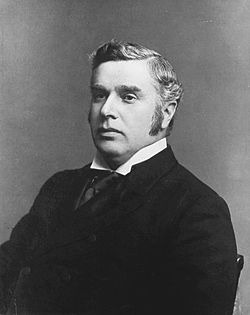This article includes a list of references, related reading, or external links, but its sources remain unclear because it lacks inline citations .(September 2024) |
5th Canadian Ministry 5e conseil des ministres du Canada | |
|---|---|
| 5th ministry of Canada | |
 | |
| Date formed | 5 December 1892 |
| Date dissolved | 12 December 1894 |
| People and organizations | |
| Monarch | Victoria |
| Governor General | Earl of Derby Marquess of Aberdeen |
| Prime Minister | John Sparrow David Thompson |
| Member party | Conservative |
| Status in legislature | Majority |
| Opposition party | Liberal |
| Opposition leader | Wilfrid Laurier |
| History | |
| Legislature term | 7th Canadian Parliament |
| Predecessor | 4th Canadian Ministry |
| Successor | 6th Canadian Ministry |
The Fifth Canadian Ministry was the cabinet chaired by Prime Minister Sir John Sparrow Thompson. It governed Canada from 5 December 1892 to 12 December 1894, including only two years in the middle of the 7th Canadian Parliament. The government was formed by the old Conservative Party of Canada.